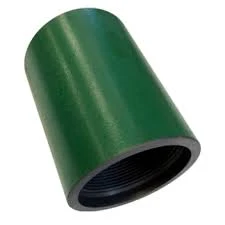- Afrikaans
- Albanian
- Amharic
- Arabic
- Armenian
- Azerbaijani
- Basque
- Belarusian
- Bengali
- Bosnian
- Bulgarian
- Catalan
- Cebuano
- Corsican
- Croatian
- Czech
- Danish
- Dutch
- English
- Esperanto
- Estonian
- Finnish
- French
- Frisian
- Galician
- Georgian
- German
- Greek
- Gujarati
- Haitian Creole
- hausa
- hawaiian
- Hebrew
- Hindi
- Miao
- Hungarian
- Icelandic
- igbo
- Indonesian
- irish
- Italian
- Japanese
- Javanese
- Kannada
- kazakh
- Khmer
- Rwandese
- Korean
- Kurdish
- Kyrgyz
- Lao
- Latin
- Latvian
- Lithuanian
- Luxembourgish
- Macedonian
- Malgashi
- Malay
- Malayalam
- Maltese
- Maori
- Marathi
- Mongolian
- Myanmar
- Nepali
- Norwegian
- Norwegian
- Occitan
- Pashto
- Persian
- Polish
- Portuguese
- Punjabi
- Romanian
- Russian
- Samoan
- Scottish Gaelic
- Serbian
- Sesotho
- Shona
- Sindhi
- Sinhala
- Slovak
- Slovenian
- Somali
- Spanish
- Sundanese
- Swahili
- Swedish
- Tagalog
- Tajik
- Tamil
- Tatar
- Telugu
- Thai
- Turkish
- Turkmen
- Ukrainian
- Urdu
- Uighur
- Uzbek
- Vietnamese
- Welsh
- Bantu
- Yiddish
- Yoruba
- Zulu
Dimensions and Specifications for Bull Plug Design and Manufacturing Standards
Understanding Bull Plug Dimensions A Comprehensive Guide
Bull plugs are essential components used in various industries, particularly in oil and gas, chemical, and water treatment sectors. They serve critical functions by sealing pipe ends, maintaining system integrity, and ensuring safety during storage and transportation of fluids. This article will provide an overview of bull plug dimensions, their importance, and considerations for selection and usage.
What is a Bull Plug?
A bull plug, also known as a pipe plug, is a device used to close the end of a pipe or tube. It can be made from various materials, including metal, plastic, or rubber, depending on the application and the properties of the transmitted fluid. The design generally features a tapered or cylindrical shape, which allows for a snug fit within the pipe.
Importance of Dimensions
The dimensions of a bull plug are crucial for several reasons
1. Compatibility Proper dimensions ensure that the bull plug fits securely within the pipe. A tight seal prevents leaks, maintains pressure, and minimizes the risk of contaminants entering the system. 2. Pressure Ratings Bull plugs come with specifications concerning their pressure ratings. The dimensions are engineered to withstand certain pressure levels. Choosing a plug that is not designed for the intended pressure can lead to failure and potentially hazardous situations.
3. Material Properties The dimensions also relate to the material's ability to handle different types of fluids and environmental conditions. Some materials expand or contract with temperature changes, and precise dimensions ensure that the plug will perform adequately across various situations.
Typical Bull Plug Dimensions
Bull plugs come in various sizes, typically measured by the nominal pipe size (NPS) or outside diameter (OD). Some standard dimensions include
bull plug dimensions

- Diameter Common dimensions range from ½ inch to 12 inches or more, catering to different pipe sizes. - Length The length of the plug may vary, usually between 1 to 6 inches, depending on the application. - Taper Many bull plugs feature a tapered design that typically ranges from 18 to 112, facilitating a tighter fit when inserted into a pipe.
Selecting the Right Bull Plug
When choosing a bull plug, consider the following factors
1. Pipe Size Always reference the pipe’s diameter to select the correct plug size. An improper fit can lead to leaks and failures.
2. Material Selection Evaluate the chemical compatibility and the environmental conditions the plug will face. For instance, a plastic plug may be adequate for water but unsuitable for high-temperature or corrosive fluids.
3. Pressure Requirements Ensure that the selected bull plug can handle the system’s operating pressure. Check manufacturer specifications for pressure ratings corresponding to the dimensions.
4. Installation Method Some bull plugs require specific tools for installation, like a wrench or a socket. Consider whether you have the necessary equipment before purchasing.
5. Standards and Certifications Depending on the industry, certain standards may govern the use of bull plugs. Familiarize yourself with relevant regulations and ensure that the plugs meet them.
Conclusion
In summary, understanding bull plug dimensions is vital for ensuring that these components perform effectively and safely within various systems. By carefully considering compatibility, pressure ratings, and material properties, users can select the appropriate bull plug for their specific needs. Proper installation and regular inspections can further enhance the reliability of these essential components, contributing to the efficiency and safety of fluid transportation systems. Whether in an industrial setting or a plumbing task, knowledge of bull plug dimensions is key to achieving optimal performance.
-
Well Casing Extension Couplings – Applications and InstallationNewsJun.06,2025
-
Types of Crossover Subs in Drilling & CompletionNewsJun.06,2025
-
Key Features of High-Quality Tubing Pup JointsNewsJun.06,2025
-
Installation and Maintenance Tips for Steel Couplings for PipeNewsJun.06,2025
-
How to Select the Right Pup Joint for Oil & Gas OperationsNewsJun.06,2025
-
Applications of Stainless Steel Pipe CouplingsNewsJun.06,2025







